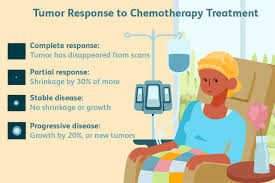Cancer remains one of the most challenging diseases to treat, affecting millions of lives worldwide. Among the various treatment options available, chemotherapy stands out as one of the most widely used and effective methods. But how exactly does chemotherapy work to treat cancer? In this comprehensive guide, we’ll delve into the science behind chemotherapy, its mechanisms, types, benefits, and potential side effects. By the end, you’ll have a clear understanding of how this powerful treatment fights cancer and improves patient outcomes.
What Is Chemotherapy?
Chemotherapy refers to the use of drugs to destroy or slow the growth of cancer cells. Unlike surgery or radiation therapy, which target specific areas, chemotherapy is a systemic treatment. This means it travels throughout the body to attack cancer cells that may have spread from the original tumor to other organs or tissues.
Chemotherapy is often used in combination with other treatments, such as surgery, radiation therapy, or immunotherapy, to maximize its effectiveness. It can be administered in various ways, including intravenously, orally, or through injections, depending on the type and stage of cancer.
How Does Chemotherapy Work to Treat Cancer?
Chemotherapy works by targeting rapidly dividing cells, a hallmark of cancer. Cancer Cells grow and divide uncontrollably, forming tumors and spreading to other parts of the body. Chemotherapy drugs interfere with this process, either by killing the cells or preventing them from multiplying.
Here’s a step-by-step breakdown of how chemotherapy works:
1. Disrupting Cell Division
Cancer cells divide much faster than normal cells. Chemotherapy drugs are designed to target cells during different phases of the cell cycle, such as DNA replication or cell division. By disrupting these processes, the drugs prevent cancer cells from growing and spreading.
2. Damaging DNA
Some chemotherapy drugs damage the DNA inside cancer cells, making it impossible for them to replicate. Without the ability to divide, the cells eventually die.
3. Inhibiting Enzymes and Proteins
Certain chemotherapy drugs block the action of enzymes or proteins that cancer cells need to grow and survive. For example, some drugs inhibit the formation of new blood vessels that supply tumors with nutrients, effectively starving the cancer cells.
4. Triggering Apoptosis
Apoptosis is the process of programmed cell death. Chemotherapy can trigger this process in cancer cells, causing them to self-destruct.
Types of Chemotherapy Drugs
There are over 100 different chemotherapy drugs, each with a unique mechanism of action. These drugs are often grouped into categories based on how they work:
1. Alkylating Agents
These drugs damage the DNA of cancer cells, preventing them from reproducing. Examples include cyclophosphamide and cisplatin.
2. Antimetabolites
Antimetabolites mimic the building blocks of DNA and RNA, tricking cancer cells into incorporating them. This disrupts cell division. Examples include 5-fluorouracil and methotrexate.
3. Antitumor Antibiotics
These drugs interfere with the enzymes involved in DNA replication. Examples include doxorubicin and bleomycin.
4. Topoisomerase Inhibitors
These drugs block the action of topoisomerase enzymes, which are essential for DNA replication. Examples include etoposide and topotecan.
5. Mitotic Inhibitors
Mitotic inhibitors prevent cancer cells from dividing by interfering with the formation of microtubules, which are necessary for cell division. Examples include paclitaxel and vinblastine.
6. Corticosteroids
While not traditional chemotherapy drugs, corticosteroids are often used in combination with other treatments to reduce inflammation and suppress the immune system. Examples include prednisone and dexamethasone.
How Is Chemotherapy Administered?
The method of administering chemotherapy depends on the type of cancer, the drugs used, and the patient’s overall health. Common methods include:
1. Intravenous (IV) Chemotherapy
The drugs are delivered directly into a vein, allowing them to enter the bloodstream and reach cancer cells throughout the body.
2. Oral Chemotherapy
Patients take the drugs in pill or liquid form, making it a convenient option for home treatment.
3. Injection
Chemotherapy drugs can be injected into a muscle, under the skin, or directly into a tumor.
4. Topical
For certain skin cancers, chemotherapy drugs are applied as creams or ointments.
5. Intra-Arterial
The drugs are injected into an artery that supplies blood to the tumor, delivering a high concentration directly to the cancer cells.
6. Intraperitoneal
Used for cancers in the abdominal cavity, the drugs are delivered directly into the peritoneal space.
When Is Chemotherapy Used?
Chemotherapy is used in various scenarios, depending on the type and stage of cancer:
1. Curative Treatment
In some cases, chemotherapy can eliminate cancer, especially when used in the early stages.
2. Adjuvant Therapy
After surgery or radiation therapy, chemotherapy is used to kill any remaining cancer cells and reduce the risk of recurrence.
3. Neoadjuvant Therapy
Chemotherapy is administered before surgery or radiation to shrink tumors, making them easier to remove.
4. Palliative Care
For advanced cancers, chemotherapy can relieve symptoms and improve quality of life, even if it doesn’t cure the disease.
Benefits of Chemotherapy
Chemotherapy offers several benefits in the fight against cancer:
1. Systemic Treatment
Unlike localized treatments, chemotherapy can target cancer cells anywhere in the body, making it effective for metastatic cancers.
2. Combination Therapy
Chemotherapy can be combined with other treatments to enhance their effectiveness.
3. Versatility
It can be used to treat a wide range of cancers, from blood cancers like leukemia to solid tumors like breast and lung cancer.
4. Symptom Relief
Even when a cure isn’t possible, chemotherapy can shrink tumors and alleviate symptoms such as pain and difficulty breathing.
Side Effects of Chemotherapy
While chemotherapy is highly effective, it can also affect healthy cells that divide rapidly, such as those in the hair follicles, bone marrow, and digestive tract. This leads to side effects, which vary depending on the drugs used and the patient’s overall health. Common side effects include:
1. Fatigue
Chemotherapy can cause extreme tiredness, which may persist even after treatment ends.
2. Nausea and Vomiting
Many chemotherapy drugs irritate the stomach lining, leading to nausea and vomiting.
3. Hair Loss
Chemotherapy often damages hair follicles, causing hair to thin or fall out.
4. Weakened Immune System
Chemotherapy can reduce the number of white blood cells, increasing the risk of infections.
5. Anemia
A decrease in red blood cells can lead to fatigue, dizziness, and shortness of breath.
6. Mouth Sores
Chemotherapy can cause painful sores in the mouth and throat.
7. Neuropathy
Some drugs damage nerves, causing tingling, numbness, or pain in the hands and feet.
Managing Side Effects
Advances in medical science have led to better ways to manage chemotherapy side effects. For example:
- Anti-nausea medications can reduce nausea and vomiting.
- Growth factors can stimulate the production of white blood cells, reducing the risk of infections.
- Cooling caps can minimize hair loss during treatment.
- Pain relievers and physical therapy can help manage neuropathy.
The Future of Chemotherapy
Research is ongoing to improve chemotherapy and reduce its side effects. Some promising developments include:
1. Targeted Therapy
These drugs specifically target cancer cells while sparing healthy cells, and reducing side effects.
2. Immunotherapy
This approach boosts the body’s immune system to fight cancer more effectively.
3. Personalized Medicine
By analyzing a patient’s genetic makeup, doctors can tailor chemotherapy to their specific cancer type, improving outcomes.
4. Nanoparticle Delivery
Tiny particles can deliver chemotherapy drugs directly to cancer cells, minimizing damage to healthy tissues.
Conclusion
Chemotherapy remains a cornerstone of cancer treatment, offering hope to millions of patients worldwide. By understanding how chemotherapy works, patients and their families can make informed decisions about their care. While the treatment can be challenging, advancements in medical science continue to improve its effectiveness and reduce side effects. If you or a loved one is facing cancer, consult with a healthcare professional to explore how chemotherapy can be part of a comprehensive treatment plan.






Comments